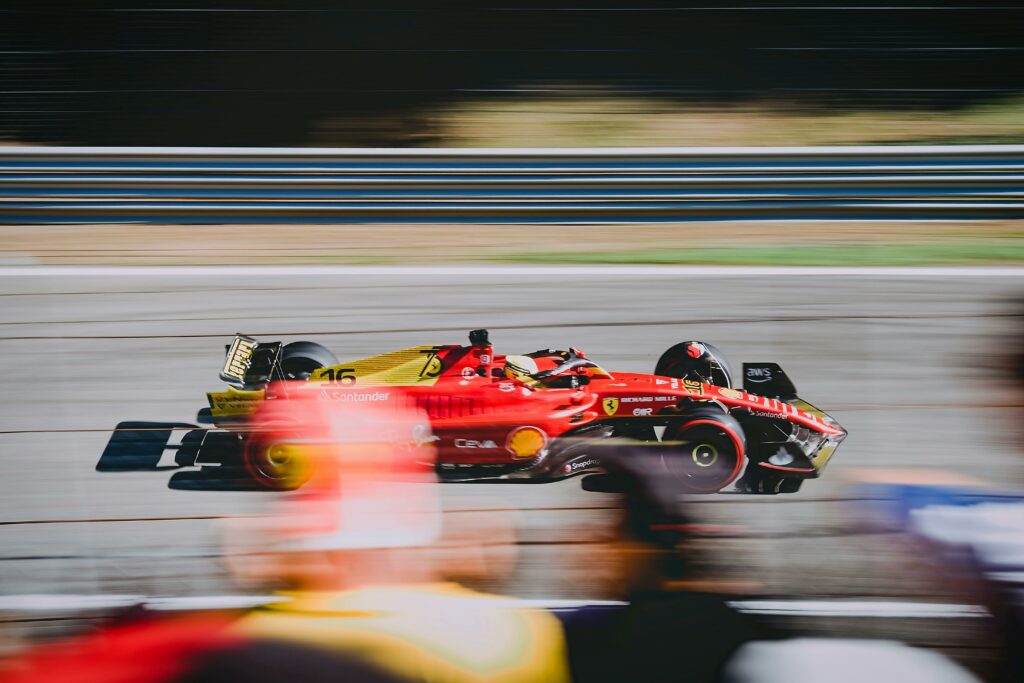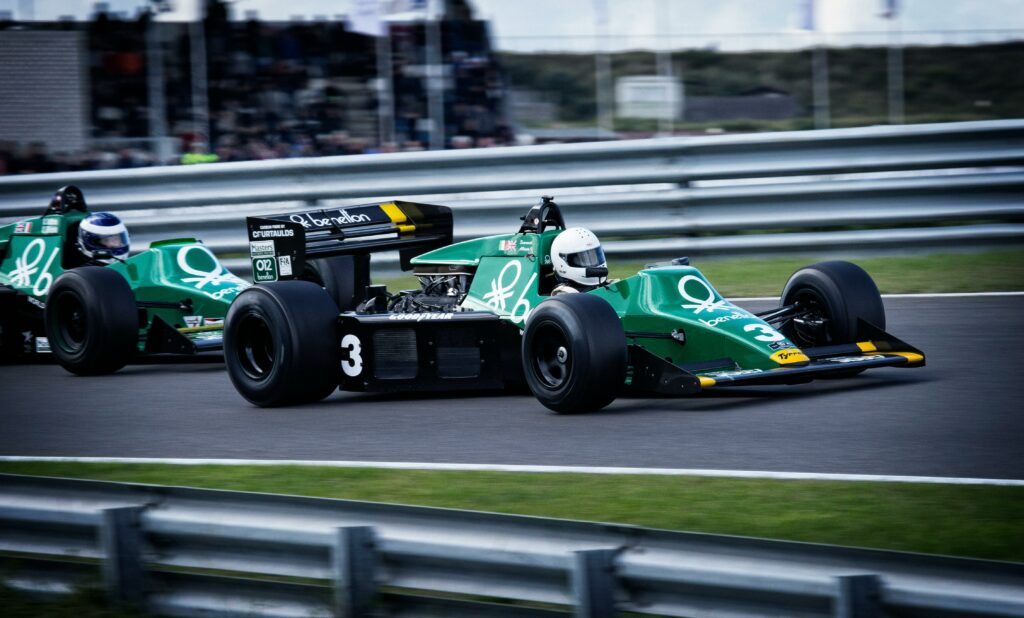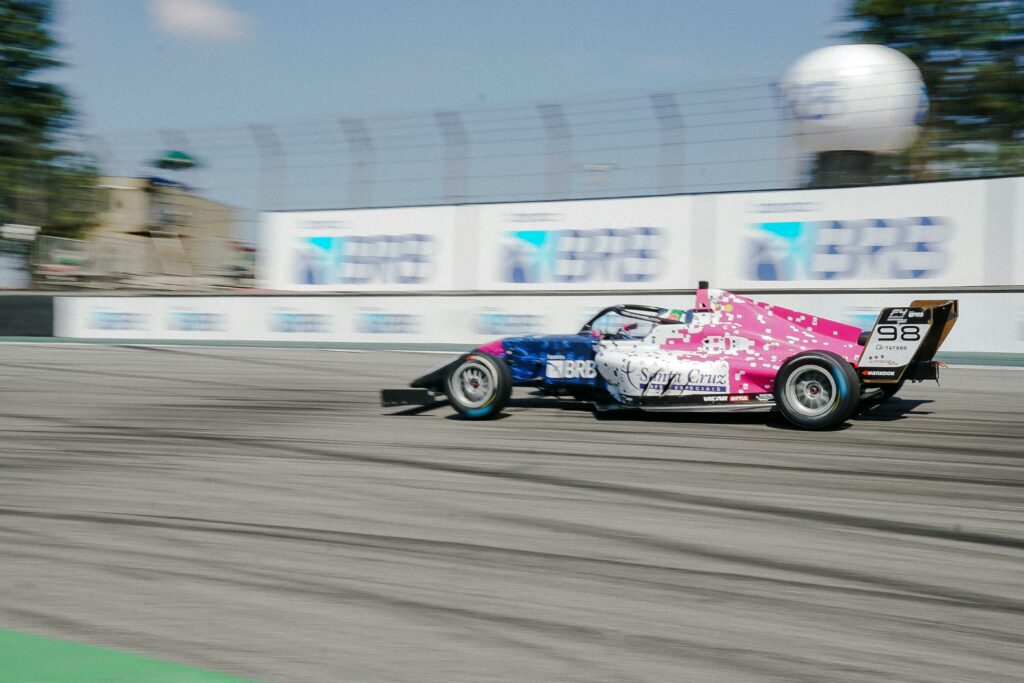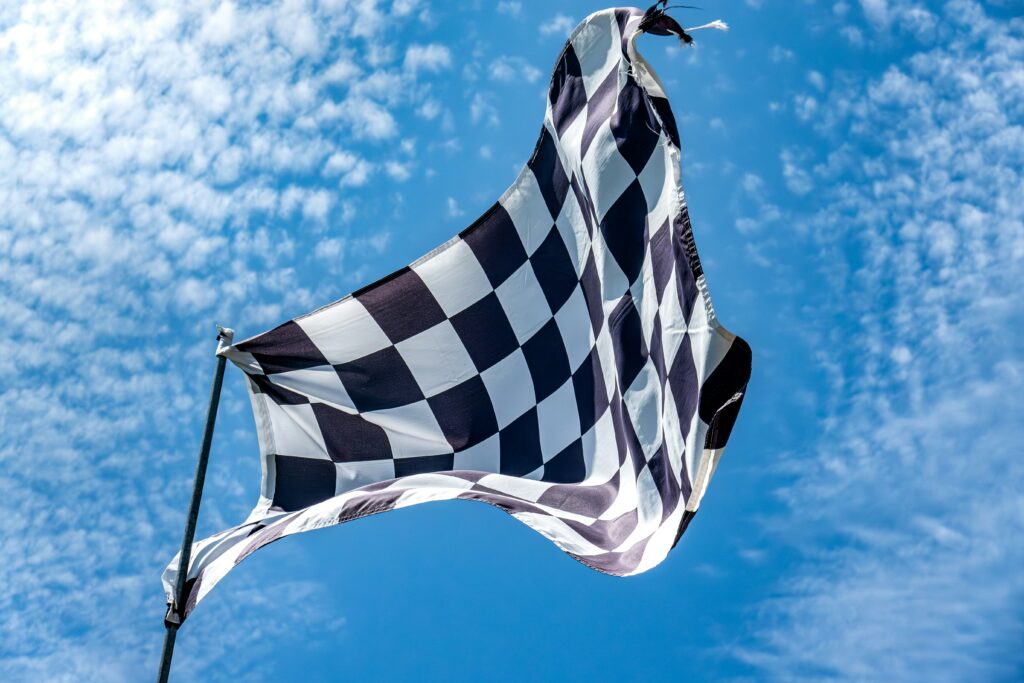First-Time F1 Grand Prix Attendee? Here’s What You Need to Know
If you’ve decided to experience the thrill of a live Formula 1 grand prix for the first time, you’re in for an absolutely unforgettable weekend. The roar of twenty cars hurtling past at over 300 kilometres per hour, the electric atmosphere of tens of thousands of passionate fans, and the sheer spectacle of the world’s most prestigious motorsport create memories that last a lifetime.
First-time F1 attendees can feel overwhelmed with so many decisions to make and details to consider. From choosing the right F1 grand prix tickets to understanding what to expect on race day, there’s a lot to navigate.
But don’t worry – we’ve created this beginner’s guide to the Grand Prix to help you plan the perfect introduction to the world of Formula 1, ensuring your first experience is everything you hoped for and more.

Securing Your Spot: Tickets & Seating Explained
The foundation of any great F1 race weekend is securing the right tickets. Understanding the different types of F1 tickets available will help you make the best choice for your budget, comfort preferences and viewing priorities. Each ticket type offers a unique perspective on the racing action, from flexible general admission to luxurious hospitality experiences.
General Admission
General admission F1 tickets are the most flexible and budget-friendly option for experiencing grand prix races. These tickets don’t provide reserved seating in grandstands, but they offer access to designated public viewing areas around the F1 race track. You’ll typically find these areas at key sections of the circuit, including corners, straights and sometimes near the pit lane.
The beauty of general admission lies in its flexibility – you can move around the circuit throughout the weekend, discovering different vantage points and soaking up the atmosphere from various locations. However, arriving early is essential to secure the best spots, as popular viewing areas can become crowded, especially during qualifying and race day. This is a key F1 race tip for beginners.
Grandstand Tickets
Grandstand tickets place you at the heart of the action with elevated, reserved seating that guarantees fantastic views of the racing. These premier grand prix tickets are positioned at strategic locations around the circuit, offering unobstructed views of key racing moments like overtaking zones, tight corners and dramatic braking points.
Each grandstand provides a unique perspective on the race. Some offer views of multiple corners, while others focus on specific sections like the main straight, where you’ll witness the start and finish of the race. Grandstand seating typically includes amenities like toilets, food vendors and weather protection, making your race day experience more comfortable.
Hospitality & VIP Packages
For those seeking an elevated F1 experience, hospitality and VIP packages combine premium viewing with luxury services. These exclusive F1 packages include everything from air-conditioned seating and gourmet meals to open bars and exclusive appearances from current and former F1 drivers.
Hospitality experiences often feature private suites with panoramic views, dedicated host services, and access to exclusive areas of the circuit. Many packages include additional perks like paddock walks, behind-the-scenes tours, and networking opportunities with fellow motorsport enthusiasts.
For first-time F1 race attendees looking for a memorable experience, explore our VIP F1 Packages that combine premier viewing locations with world-class hospitality.
Factors to Consider When Choosing Your Tickets
Selecting the perfect grand prix tickets involves balancing several important factors to ensure your weekend meets your expectations and budget.
Price
F1 tickets range from affordable general admission passes to premium hospitality packages. Consider your overall budget, not just for tickets, but for the entire weekend, including accommodation, meals and travel. Remember that the most expensive tickets aren’t always necessary for an incredible experience – many seasoned fans prefer the flexibility and atmosphere of general admission areas.
Track Visibility
Different seating locations offer varying perspectives on the racing action. The best F1 seats for first-time attendees are typically found at main straights or high-action corners.
Main straight positions provide excellent views of the start, finish and pit lane activity. Corner seating offers dramatic braking and overtaking opportunities, while longer straight sections showcase the incredible speed of modern F1 cars.
Check out the specific circuit layouts to understand what each viewing area offers.
Amenities
Consider what amenities matter most to you. Grandstand tickets typically include basic facilities and weather protection, while hospitality packages offer luxury amenities like air conditioning, premium dining and exclusive access areas. If comfort is a priority, especially for longer race weekends, investing in tickets with better amenities can enhance your experience.
Special Considerations: Children’s Tickets
Many circuits offer discounted or free tickets for children, making F1 weekends more accessible for families. Check age restrictions and availability when booking, as these special rates often have limited availability. Some circuits also provide family-friendly zones with additional activities and amenities designed for younger fans.

What to Pack & Wear for Race Weekend
F1 weekend planning is essential for a comfortable and enjoyable experience. They involve long days outdoors with varying weather conditions, so packing smart is a must.
Dress for Comfort & Climate
Comfort should be your top priority when choosing what to wear. You’ll be walking considerable distances and spending long periods standing or sitting outdoors. Wear comfortable shoes with good support. Lightweight, breathable clothing works best, with layers that can be added or removed as temperatures change throughout the day.
Check the weather forecast for your specific race weekend and pack accordingly.
Sun & Rain Essentials
Most F1 race tracks offer limited shade, making sun protection crucial. Pack a wide-brimmed hat, high-SPF suncream and sunglasses to protect yourself. A small umbrella or lightweight rain jacket is essential, as the weather can change quickly, and grandstand seating may not provide adequate cover.
Protect Your Hearing
F1 cars produce incredible noise levels that can damage hearing without proper protection. Invest in quality earplugs or noise-cancelling headphones; many fans prefer foam earplugs that reduce noise while still allowing you to hear commentary and conversation.
Other Things to Consider
Staying hydrated is crucial during long race days. Bring a refillable water bottle or snacks to avoid expensive venue purchases and ensure you have access to water throughout the day. A portable phone charger or power bank is essential for capturing photos, videos and staying connected with your group.
Prohibited Items
Each circuit has specific restrictions on what items can be brought into the venue. Generally prohibited items include large bags, glass containers, professional cameras with long lenses and outside alcohol. Check the specific circuit’s website before travelling to avoid disappointment at security checkpoints.
Most venues allow small personal items, medications and basic camera equipment, but restrictions can vary significantly between locations. Some circuits also restrict certain types of clothing or banners, particularly those supporting specific teams or drivers.
Navigating the Circuit: Travel, Accommodation & Logistics
Successfully navigating the logistics of an F1 race weekend requires careful planning, especially for first-time GP attendees. Understanding your options for transportation, accommodation, and crowd management will help ensure a smooth and enjoyable experience.
Getting There: Parking, Official Shuttles, Public Transport, Rideshares
Most F1 circuits are located outside major city centres, making transportation planning crucial for race weekend success. Understanding your options and booking in advance can save significant time and stress.
Driving
If you’re planning to drive to the circuit, book parking well in advance as spaces fill up quickly and prices increase closer to race weekend. Official circuit parking typically offers the most convenient access but at premium prices. Consider parking slightly further away and walking if you’re comfortable with the distance – this often costs less and may actually be faster for leaving after the race.
Official Shuttles
Many circuits offer official shuttle services from designated pickup points in nearby cities or transport hubs. These services are often included in F1 packages and provide hassle-free transportation with dedicated lanes and priority access. The convenience of not worrying about parking or navigation makes official shuttles an excellent option for first-time F1 attendees.
Public Transport
Public transport is often the most cost-effective and efficient way to reach F1 circuits, especially for races near major cities. Many circuits coordinate with local transport authorities to provide enhanced services during race weekends, including additional trains, buses and extended operating hours.
Accommodation Choices: Hotels and Strategic Booking Tips
Securing quality accommodation at reasonable prices requires strategic planning and early booking. F1 race weekends create enormous demand for hotels in the surrounding areas, driving up prices and reducing availability.
Here are some top F1 tips to secure your spot.
- Book Early
The key to securing good accommodation deals is booking as early as possible, ideally when the F1 calendar is first announced. Hotels near popular circuits like Monaco, Silverstone, and Monza fill up quickly, and prices can increase dramatically as race weekend approaches.
Don’t limit yourself to hotels immediately next to the circuit – consider accommodations in nearby cities or towns that offer good transport links to the track. This approach often provides better value and more dining and entertainment options.
- Location Matters
Balance proximity to the circuit with your other priorities. Staying closer to the track reduces travel time and complexity but may limit your dining and entertainment options. Alternatively, staying in a nearby city centre provides more variety but requires planning for longer travel times and potentially busier transport.
Consider your plans for the entire weekend – if you want to explore local attractions, restaurants, and nightlife, staying in a city centre might be worth the extra travel time to and from the circuit.
- Hotel + Transfer Packages
F1 travel packages that combine accommodation with transportation offer significant advantages for first-time grand Prix attendees. These comprehensive packages eliminate the stress of coordinating multiple bookings while often providing cost savings compared to booking everything separately.
Our grand prix travel packages include carefully selected hotels with convenient transport links to the circuit, removing the hassle of accommodation planning. By partnering with trusted hotels, we secure exclusive group discounts and ensure guests enjoy comfortable, well-located stays.
Beating the Crowds: Tips for Early Arrival and Smooth Exits
F1 race weekends attract enormous crowds, so it can be overwhelming if you’re attending F1 for the first time. Smart planning can help you avoid the worst congestion and make the most of your time at the circuit.
- Arrive early each day to secure the best general admission spots and avoid queues at security checkpoints. Many circuits open their gates several hours before track action begins, giving you time to explore, find your bearings, and settle into your preferred viewing location.
- Plan your exit strategy before the race ends. If you’re not concerned about seeing the podium ceremony, consider leaving 5-10 minutes before the chequered flag to avoid the worst of the departure rush. Or, if you want to experience the full race atmosphere, plan to stay for at least an hour after the race ends to let the initial crowds disperse.

Understanding the F1 Schedule
An F1 race weekend follows a structured format designed to build excitement and maximise on-track action. Knowing the schedule helps you make the most of your experience and ensures you don’t miss key moments.
| Day | What to Expect |
| Friday | Friday features two practice sessions, Free Practice 1 in the afternoon and Free Practice 2 in the evening, where teams fine-tune their car setups and drivers familiarise themselves with the circuit. It’s the most relaxed and affordable day to attend, with plenty of on-track action and more freedom to explore different viewing areas. |
| Saturday | Saturday includes the final practice session, Free Practice 3, followed by the high-stakes qualifying session. This one-hour event consists of three elimination rounds and determines the starting grid for the race, often delivering some of the most intense moments of the weekend. |
| Sunday | Sunday is race day, the highlight of the weekend. The main race typically lasts between 90 minutes and two hours and is preceded by pre-race ceremonies, the driver parade, and the formation lap. The day also includes support races and additional entertainment, making it a full schedule of motorsport excitement. |
| Sprint Weekends | On Sprint weekends, the format changes slightly. Friday features a single practice session followed by qualifying, which sets the grid for Saturday’s shorter Sprint race. The results of the Sprint then determine the starting order for Sunday’s main race, adding extra excitement and strategic complexity to the weekend. |
Key Moments to Witness: Formation Lap, Pit Stops, and the Thrilling Start
Every F1 race weekend features unmissable moments that define the sport’s excitement and drama. Understanding these key moments helps you appreciate the strategic depth and split-second decisions that determine race outcomes.
- Formation Lap – This builds incredible tension as drivers complete a slow lap to warm their tyres before taking grid positions, knowing the next few seconds will be crucial to their race prospects.
- Race Start – Often the weekend’s most dramatic moment when twenty cars accelerate from standstill and jockey for position into the first corner. Many races are won or lost in these opening moments, making it essential viewing for any F1 fan.
- Pit Stops – These showcase incredible precision with complete tyre changes happening in under three seconds through perfect teamwork. Their timing often determines race strategy and can completely change the competitive order.
- Safety Car Periods – All cars bunch together behind a pace car after accidents or dangerous conditions, dramatically changing race dynamics by allowing trailing cars to catch up and creating opportunities for exciting restarts.
F1 Lingo for Rookies: A Quick Glossary
Understanding basic F1 terms enhances your appreciation of the sport and helps you follow commentary and conversation more easily. Here are some terms you should know:
| Term | Definition |
| Apex | The innermost point of a corner, representing the optimal racing line |
| Chicane | A sequence of tight corners in opposite directions, designed to slow cars down |
| DRS | Drag Reduction System – a rear wing adjustment that reduces drag on certain track sections |
| Formation Lap | The slow lap drivers complete before taking their starting positions |
| Pit Window | The optimal time period for making a pit stop during the race |
| Pole Position | The first position on the starting grid, awarded to the fastest qualifier |
| Sector | One of three timed sections that divide each lap of the circuit |
| Slipstream | The area of reduced air resistance behind another car |
| Undercut | A strategy where a driver pits earlier than competitors to gain track position |
| Dirty Air | Turbulent air behind another car that reduces aerodynamic efficiency |
Understanding the Flags
F1 uses a standardised flag system to communicate important information to drivers and spectators about track conditions and race status.
| Flag | Meaning |
| Green Flag | Track is clear, racing can begin or resume |
| Yellow Flag | Caution – slow down, no overtaking due to hazard ahead |
| Red Flag | Race stopped due to dangerous conditions or serious incident |
| Blue Flag | Slower car must allow faster car to overtake |
| Black Flag | Driver must return to pits immediately (serious penalty) |
| White Flag | Slow-moving vehicle on track ahead |
| Chequered Flag | Race finished |
| Safety Car | All cars must follow the safety car at reduced speed |
| Black and White Flag | Warning for unsportsmanlike behaviour |
| Black and Orange Flag | Car has mechanical problems and must pit |

Ready For The Race of a Lifetime?
Your first F1 grand prix could spark a lifelong passion for motorsport’s ultimate spectacle. From selecting the perfect F1 tickets to understanding race weekend schedules, proper preparation ensures an unforgettable experience.
Whether you choose general admission for flexibility, grandstand tickets for guaranteed views, or hospitality packages for luxury comfort, you’re about to witness something extraordinary. The roar of engines, passionate fans, and wheel-to-wheel racing at 300 kilometres per hour creates an unmatched sporting experience.
For a completely hassle-free F1 race weekend, our comprehensive Grand Prix packages handle every detail from accommodation to circuit transfers. We take care of the logistics while you focus on enjoying your introduction to the thrilling world of Formula 1.
Get in touch with our team today to secure your space at the next Grand Prix racing event.
FAQs
1. What Should I Bring to My First F1 Grand Prix?
You’ll likely be outdoors for long stretches, so bring sunscreen, a hat, comfortable shoes, ear protection, and a reusable water bottle. If allowed at the venue, binoculars and a portable seat cushion can make viewing more comfortable. Always check the event’s bag size policy before arrival.
2. How Early Should I Arrive at the Grand Prix Track?
For your first F1 event, plan to arrive at least 1–2 hours before the race or qualifying starts. Security lines can be long, and it’s helpful to explore the fan zone, merch stands, and food stalls early before they get crowded.
3. Do I Need Ear Protection at an F1 Race?
While current F1 cars are quieter than older engines, the noise level near the track can still be intense. Earplugs or noise-canceling headphones are strongly recommended, especially for children.
4. What’s the Best Type of F1 Ticket for a First-Timer?
Grandstand seats offer reserved seating and generally better track visibility—perfect for first-time attendees. General Admission offers flexibility and lower prices but may require arriving early to claim a good viewing spot.
5. How Do I Get Around a Grand Prix Circuit and Avoid Getting Lost?
F1 circuits can be huge. Before your trip, download the venue map on your phone and familiarize yourself with key landmarks such as entrances, food zones, and your seating section. Some events also have official apps with live maps and updates to make navigating easier.
